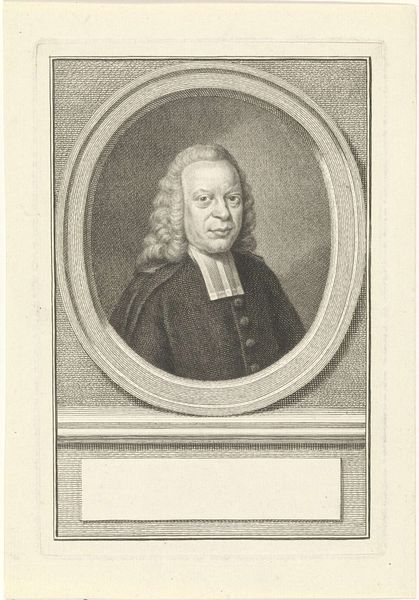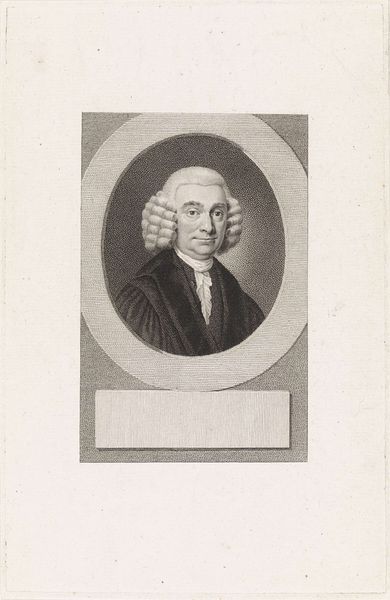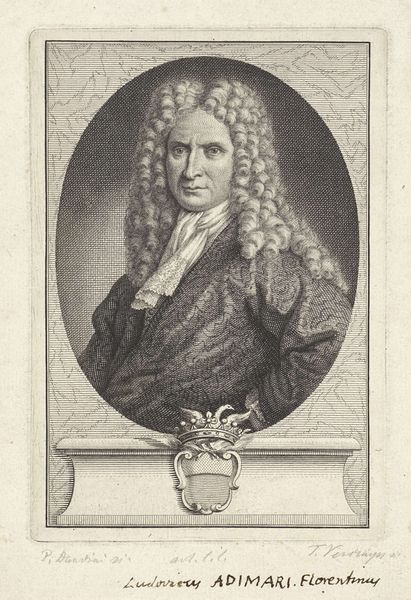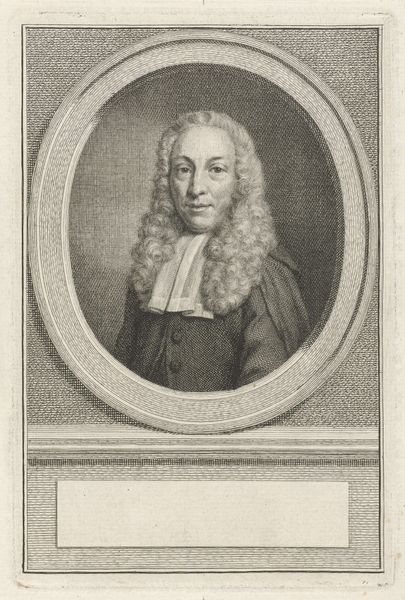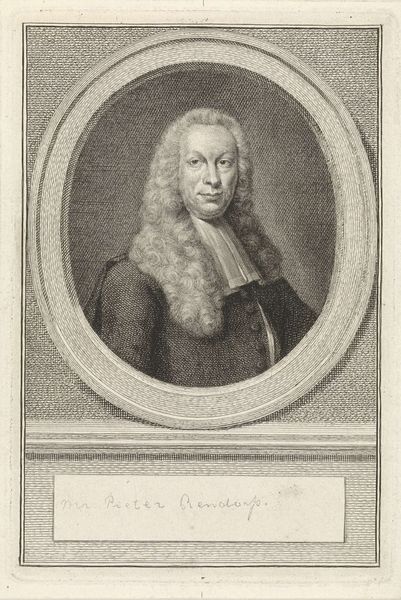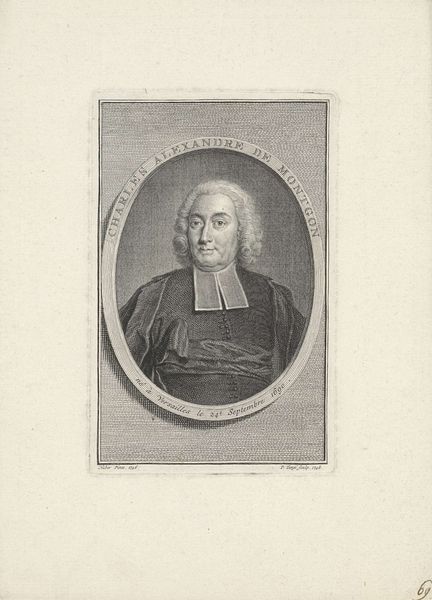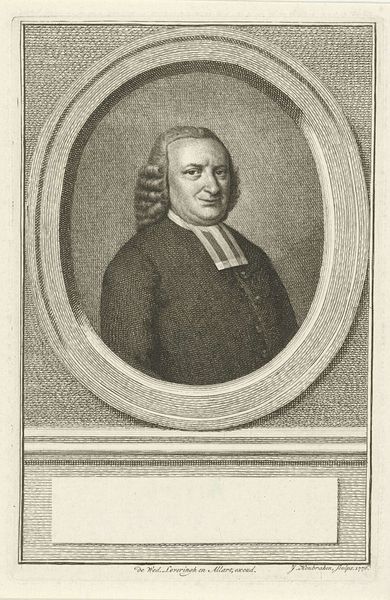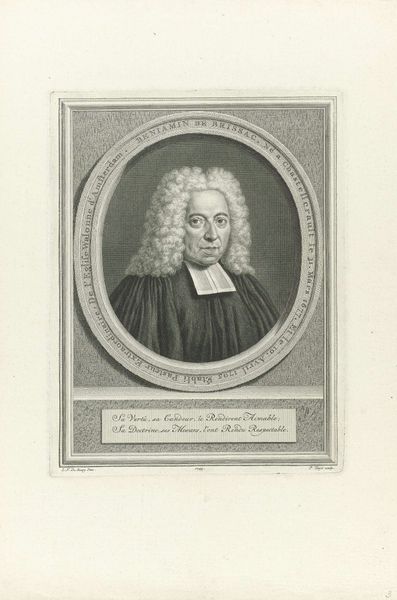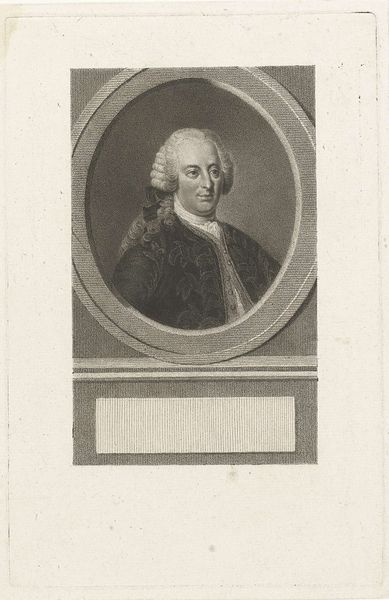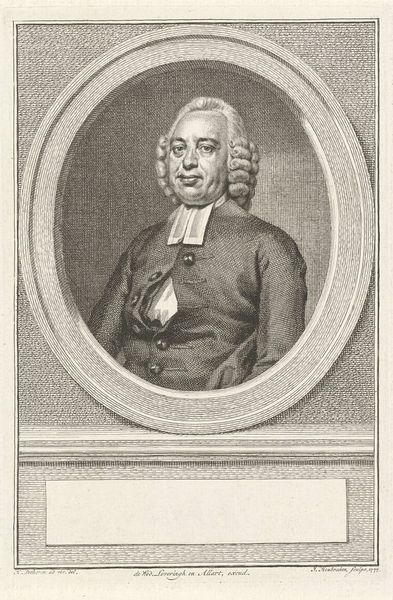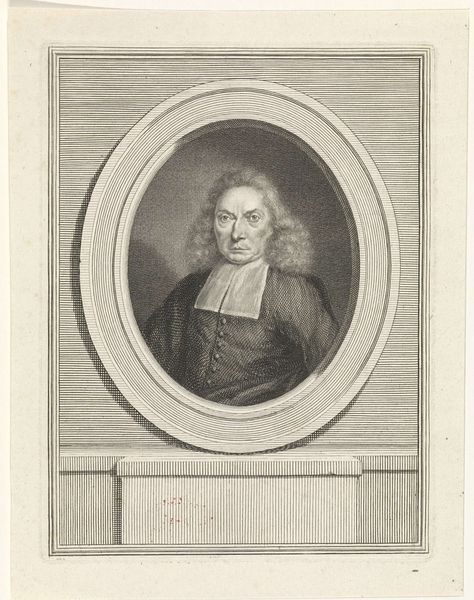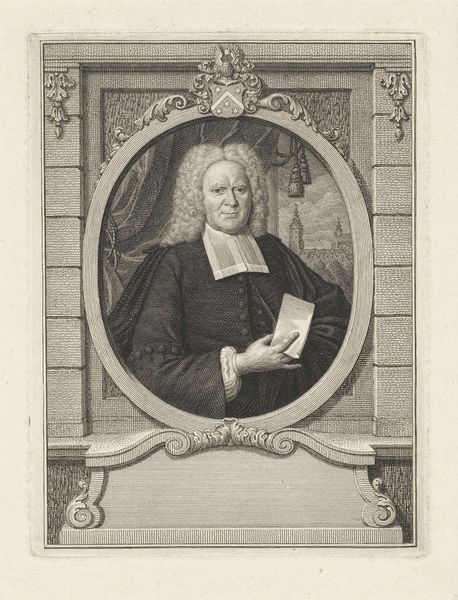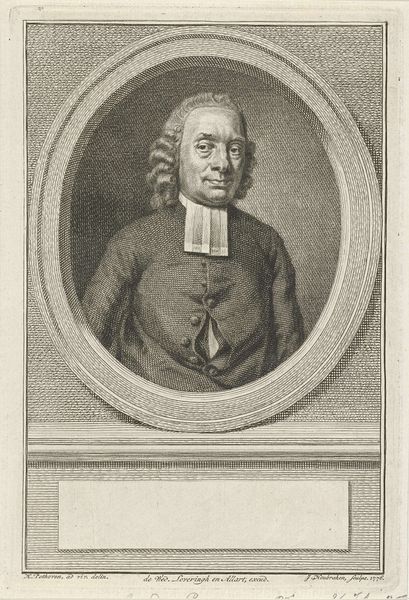
print, engraving
#
portrait
#
neoclacissism
# print
#
historical photography
#
19th century
#
history-painting
#
engraving
Dimensions: height 184 mm, width 124 mm
Copyright: Rijks Museum: Open Domain
Editor: Here we have Reinier Vinkeles’s "Portret van Henricus van Herwerden" from 1797. It’s an engraving, giving it a very precise, almost clinical feel. What can you tell me about the process and the potential context behind this particular portrait? Curator: Looking at this engraving, I’m immediately drawn to the labor involved. The precise lines, the control needed to create this image, it speaks to the status afforded to portraiture at this time. Engraving as a reproductive technology also challenges notions of artistic originality; Vinkeles is making images accessible beyond the elite, but he's still operating within a system of patronage. The choice of materials and method points to a wider economic and social network, influencing who and how someone is memorialized through art. How does this labor of reproductive printmaking relate to academic pursuits by Herwerden? Editor: That’s interesting. I hadn’t really considered the labour aspect so directly. So you're saying that engraving, as a process, kind of democratises portraiture while simultaneously reinforcing class structures through the labor it demands and reproduces. Curator: Exactly. Think about who had access to commissioning engravings and who performed the labor of their production. That tension shapes the image itself. We're looking at not just an individual, but also a network of production and consumption tied to 18th-century intellectual life and the technologies that support it. And don’t you think, too, that this production of "likeness," by using a Neoclassical framework and an "academic" display of knowledge, the artwork presents its sitter through a socially restrictive "lens?" Editor: I do. Thinking about it that way really shifts my perception. It’s more than just a picture, but about power, work and who has the authority to be remembered. Thanks for helping me understand. Curator: Indeed. Examining the materiality and means of production invites us to question whose stories are told and how artistic labor contributes to shaping historical narratives.
Comments
No comments
Be the first to comment and join the conversation on the ultimate creative platform.
